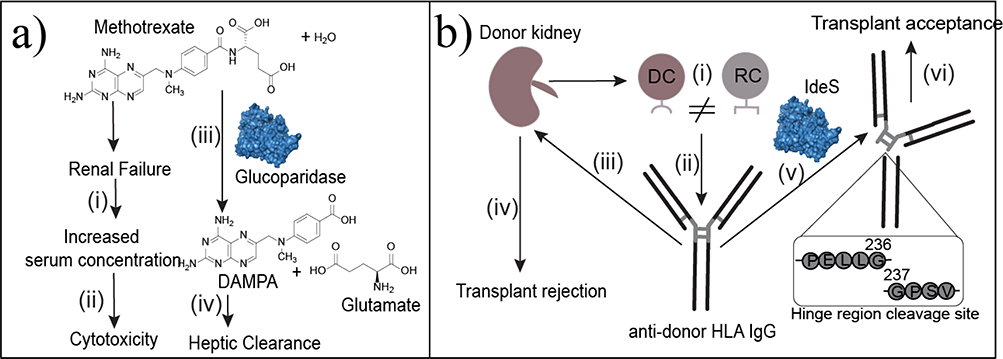Figure 6.
Enzyme-based therapies for toxin clearance or accumulated products of metabolism (metabolites and proteins). (a) Methotrexate is well tolerated in cancer therapy until renal failure increases serum concentration (i) to toxic levels (ii). Glucoparidase hydrolyzes the amide bond in methotrexate to produce DAMPA and glutamate. These products can be metabolized in the liver (iv) for clearance. (b) Organ transplants are HLA incompatible when donor cells (DCs) have MHCs encoded by a different HLA group than the recipient’s cells (RCs) (i). In response, the recipient produces IgG antibodies against the donor’s HLA type (ii). These antibodies bind to the donor cells (iii) to facilitate donor cell opsonization (iv), which causes transplant rejection. Imlifidase (IdeS) cleaves the antidonor IgG at the hinge region (v) separating the Fc region from the Fab region to disrupt the humoral immune response. This cleavage leads to transplant acceptance (vi).

